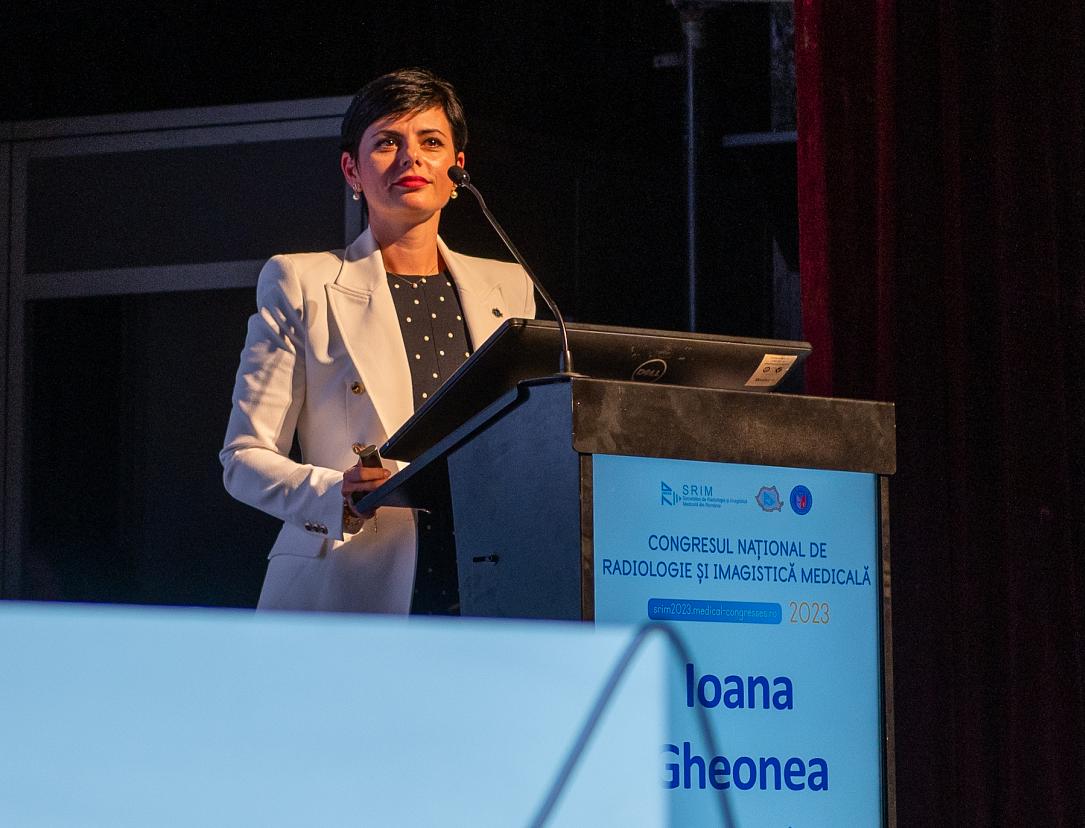Professor Ioana Gheonea, president of the Romanian Radiology Society: AI will help us with the workload we have to manage daily

This year's National Congress of Radiology and Medical Imaging, supported by Siemens Healthineers, was held in Craiova, where the event returned after close to 20 years. The city's University of Medicine and Pharmacy has a close connection to the event, professor Ioana Gheonea, the president of the Romanian Radiology Society, explains.
The congress showcased the latest developments in the field, where Craiova University is also working to bring its share. The university has hosted since 2013 an imaging department - which professor Gheonea heads - that offers diagnosis services also as part of its aim to improve its research and development side. It is also using various AI solutions, whose benefits are clear when doctors are faced with heavy workloads, the professor explains.
More on this year's congress and the local adoption of AI solutions in the Q&A below.
What do you hope participants will take away from attending the congress?
Ioana Gheonea: The first idea is the unity between the University of Medicine and Pharmacy of Craiova and the Romanian Society of Radiology and Imaging, and our partners.
With the equipment and the new technologies that have been developed in the last few years, we will see additional progress.
As for the trends, digitalization and artificial intelligence which is coming fast. We test in our imaging center [at the University of Craiova] several types of AI software. It is good that AI will help doctors with this tremendous workload that we have to manage in our daily practice.
What challenges do you see in the adoption of AI by radiologists?
Ioana Gheonea: The challenges are mainly about ethics and responsibility. How can we blame a machine if it is wrong? You will blame a human. This is the main issue, I think. Also, the availability in Romania of AI solutions.
We are still starting, but we are at the beginning of the road. So, maybe some of my colleagues distrust AI or are too optimistic or enthusiastic that AI will help.
What does the further adoption of AI depend on?
Ioana Gheonea: It depends on the equipment - it has to be a high-tech piece of equipment. It depends, of course, on the costs because every software costs a lot. Also, on the doctor and the whole personnel [who need to train] to know how to work with this software and how to use it. And, of course, you teach the program. You need to have a lot of patience to input a lot of data to test the software program.
How do you address the ethical challenges mentioned earlier?
Ioana Gheonea: We will be guided by the European Society of Radiology on all these issues. Because the ethical problem is an issue in Romania - not only concerning AI, but also about malpractice and everything that our daily practice entails.
As a medical practitioner, did you encounter particular cases where you saw that AI can make a difference?
Ioana Gheonea: Of course. A lot. For example, we have a lot of lung cancer cases, and we have a lot of lung CTs. We are doing a lot of lung CTs daily. When you have a large volume, a large number of images that you have to interpret, it's easier when AI will show you the exact size of the nodule, if it is suspected of malignancy or not. Because the AI program can do this now. […] The AI program is drawing your attention to the fact that you should look carefully at a certain lesion. […] In the last five years, we have seen a large amount of images that we have to interpret. Why? Because many high-tech equipment options have developed and everyone now gets CTs and MRIs, even in our region.
*This Healthcare Trends article is supported by Siemens Healthineers.












